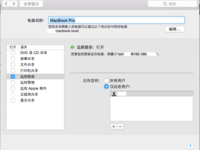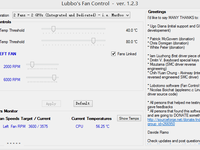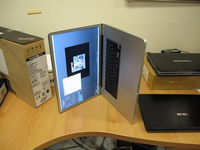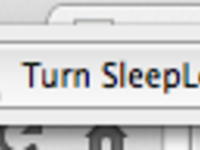The macOS is indeed beautiful and smooth. However, VirtualBox runs terribly slow on it, and many functions that are simple to implement on Windows or Ubuntu require significant effort on Mac. Additionally, I've seen online articles showing that Ubuntu scores much higher than macOS in UnixBench tests. Therefore, I decided to install Ubuntu on my Macbook. After researching, I found my Macbook is a mid-2012 model (Macbook 9-2). According to Ubuntu's official wiki, Ubuntu can only coexist with macOS on this model – it cannot be installed alone, otherwise boot issues will occur. Seriously? Mac's bootloader and OS are separate! GParted in Ubuntu's live environment shows macOS created three partitions: a 200MB FAT32 EFI boot partition, an HFS+ formatted system partition,...

Enabling Built-in FTP Service on Mac OS X
For certain reasons, I wanted to access files on my computer via FTP from my phone. Since Mac OS X has always included built-in FTP and SSH services, I decided to enable them. Click the Apple icon in the top-left corner → System Preferences → Sharing, then check the box for "Remote Login" on the left. Also, ensure your username is in the allowed users list. In the ES File Explorer app on your phone, select the SFTP connection method, enter your computer's IP address along with your username and password to connect. However, in practice, since SFTP is based on SSH with high security requirements, the transfer speed is slow—only about 100KB/s—which isn't sufficient for smooth video playback. In older Mac versions, you could enable FTP file sharing directly in Sharing settings,...

The Ultimate Solution for MacBook Overheating in Windows
LubbosFanControl is indeed a magical tool for controlling fan speeds in Windows, but adjusting fan speed only treats the symptoms, not the root cause—it addresses heat dissipation without solving the core issue of excessive heat generation. In macOS, when I use Chrome to browse Bilibili, CPU temperatures typically stabilize around 60°C and never exceed 70°C. However, performing the same operation in Windows 8 often pushes CPU temperatures above 70°C. I initially assumed Windows consumed more CPU resources, hence the higher temperatures. But one day while watching videos, I opened Task Manager and discovered CPU usage was only around 53%. Meanwhile, my Core i5 processor had activated Turbo Boost, ramping up to 2.88GHz with temperatures hovering near 75°C....

Controlling MacBook Fan Speed on Windows
MacBook's thermal management is a perpetual pain point for users. Apple's cooling strategy is extremely conservative, only ramping up fan speeds when CPU temperatures exceed 90°C, which significantly harms both the CPU and user experience. This morning after installing Windows 8.1 and watching some online videos, I accidentally touched the exhaust vent while moving the laptop... you know how that feels. Therefore, since Apple's thermal control strategy falls short, we'll take matters into our own hands using software. Initially, I tried iFanAutoControl. The software detected my CPU temperature at 70°C, rapidly increased fan speed, and brought temperatures down to 50°C. But after setting the laptop aside,...

Methods to Prevent Overheating in Apple Laptops
Apple laptops' overheating sensors don't seem very sensitive. Even when I could feel the exhaust vent scalding hot, the fan stubbornly kept spinning at a leisurely 2000 rpm. The temperature at that moment was 90 degrees. For CPU temperatures measured in laptops: 70°C indicates a minor issue, 80°C warrants attention, 90°C... immediately check your machine for problems. Excessively high CPU temperatures shorten your CPU's lifespan, ruin your computing experience, and might even burn your legs if placed on your lap. If you jump up in surprise, your $1,500 Macbook could crash to the floor. During an extreme "devil-level test" conducted overseas, testers installed specialized software to push a Macbook to full load, easily hitting 100°C. Afterward,...

How to Keep Internet Connection When Closing Macbook Lid
In the past, when I didn't use my computer, I'd simply close the lid. The screen would turn off while Thunder continued downloading files and QQ stayed online. Perfect! :-) However, when you close the lid on a Macbook, it enters true standby mode—the internet disconnects, and you can forget about QQ or Thunder. QQ can still be kept online via mobile, but Thunder... Even using your phone consumes battery. The phone needs charging, but after some time in standby, the Macbook automatically hibernates. When hibernating, the USB ports lose power, so your phone stops charging. I've never woken up to a fully charged phone. This bug must be fixed. So I searched online and found a software called Sleepless. As the name suggests, it prevents your computer from going into standby or hibernation....